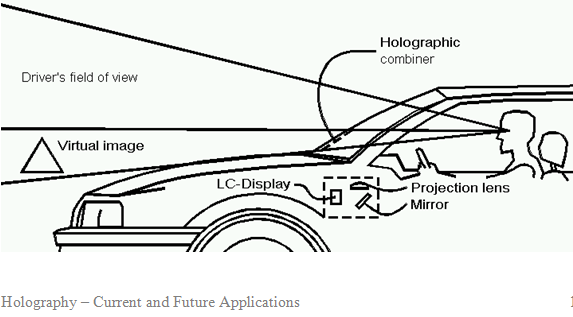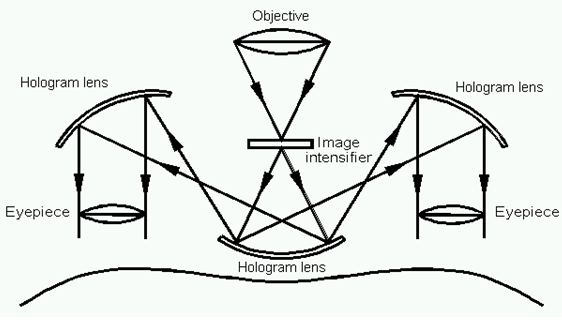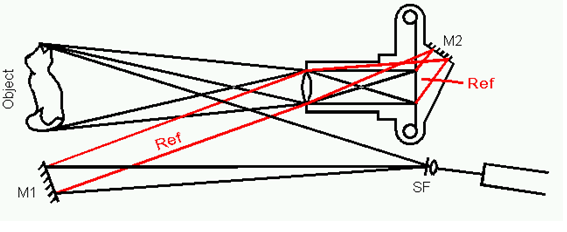←
Physics for Engineers - 1
Holography Applications
Holography Applications: Holography is a very useful tool in many areas, such as in commerce, scientific research, medicine, and industry. Some current applications that use holographic technology are:
- Holographic interferometry is used by researchers and industry designers to test and design many things, from tires and engines to prosthetic limbs and artificial bones and joints.
- Supermarket and department store scanners use a holographic lens system that directs laser light onto the bar codes of the merchandise.
- Holographic optical elements (HOE’s) are used for navigation by airplane pilots. A holographic image of the cockpit instruments appears to float in front of the windshield. This allows the pilot to keep his eyes on the runway or the sky while reading the instruments. This feature is available on some models of automobiles.

- Medical doctors can use three-dimensional holographic CAT scans to make measurements without invasive surgery. This technique is also used in medical education.
- Holograms are used in advertisements and consumer packaging of products to attract potential buyers.
- Holograms have been used on covers of magazine publications. One of the most memorable Sports Illustrated covers was the December 23, 1992 issue featuring Michael Jordan. Holograms have also been used on sports trading cards.
- The use of holograms on credit cards and debit cards provide added security to minimize counterfeiting.
- Holography has been used to make archival recordings of valuable and/or fragile museum artifacts.
- Sony Electronics uses holographic technology in their digital cameras. A holographic crystal is used to allow the camera to detect the edge of the subject and differentiate between it and the background. As a result, the camera is able to focus accurately in dark conditions.
- Holography has been use by artists to create pulsed holographic portraits as well as other works of art.
Future applications of holography include:
- Future colour liquid crystal displays (LCD’s) will be brighter and whiter as a result of holographic technology. Scientists at Polaroid Corp. have developed a holographic reflector that will reflect ambient light to produce a whiter background.
- Holographic night vision goggles
-

- Many researchers believe that holographic televisions will become available within 10 years at a cost of approximately $5000. Holographic motion picture technology has been previously attempted and was successful in the 1970s. The future of holographic motion pictures may become a reality within the next few years.
